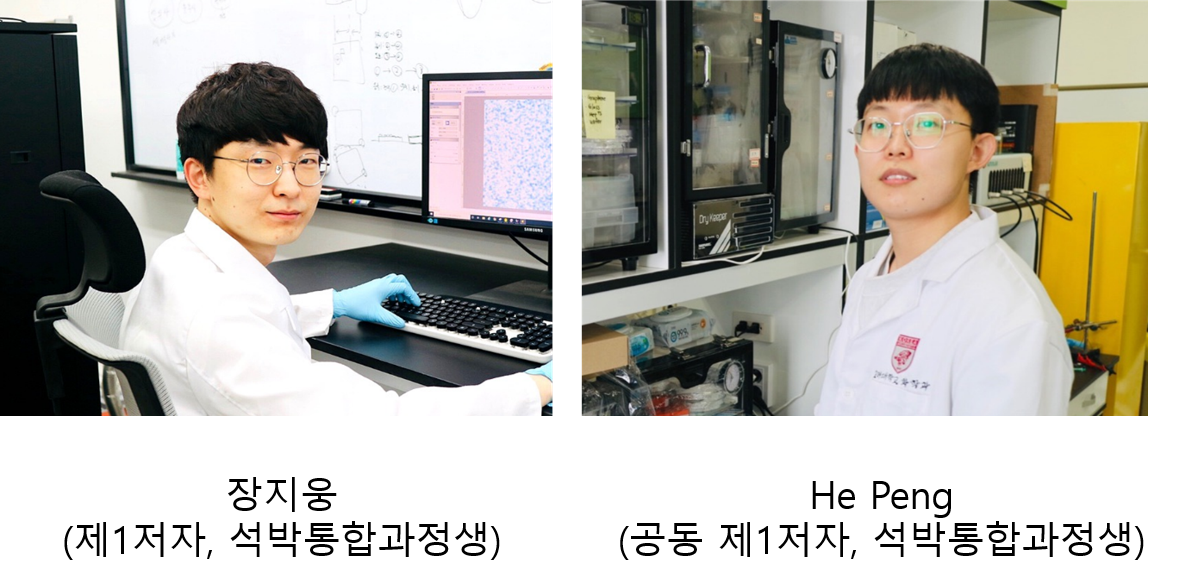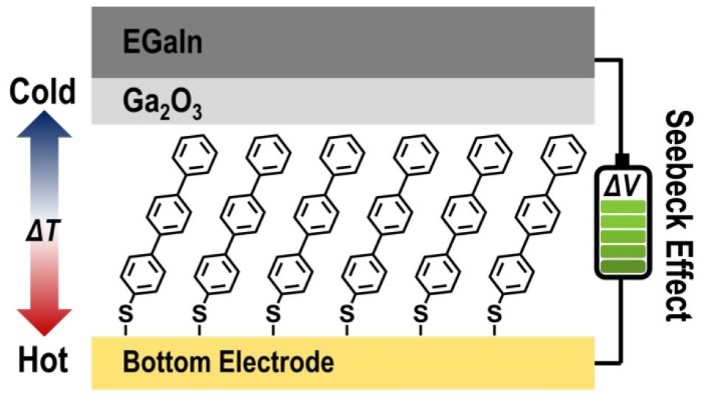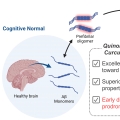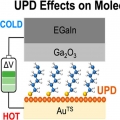| author | Hyo Jae Yoon |
|---|---|
| journal | Accounts of Chemical Research |
| Homepage | https://hyojaeyoon.wixsite.com/omml |

Understanding the thermoelectric effects that convert energy between heat and electricity on a molecular scale is of great interest to the nanoscience community. As electronic devices continue to be miniaturized to nanometer scales, thermoregulation on such devices becomes increasingly critical. In addition, the study of molecular thermoelectricity provides information that cannot be accessed through conventional electrical conductance measurements. The field of molecular thermoelectrics aims to explore thermoelectric effects in electrode-molecule-electrode tunnel junctions and draw inferences on how the (supra)molecular structure of active molecules is associated with their thermopower. In this Account, we introduce a convenient and useful junction technique that enables thermovoltage measurements of one molecule thick films, self-assembled monolayers (SAMs), with reliability, and discuss the atomic-detailed structure-thermopower relations established by the technique. The technique relies on a microelectrode composed of non-Newtonian liquid metal, eutectic gallium–indium (EGaIn) covered with a native gallium oxide layer. The EGaIn electrode makes it possible to form thermoelectric contacts with the delicate structure of SAMs in a noninvasive fashion. A defined interface between SAM and the EGaIn electrode allows time-effective collection of large amounts of thermovoltage data, with great reproducibility, efficiency, and reliable interpretation and statistical analysis of the data. We also highlight recent efforts to utilize the EGaIn technique for probing molecular thermoelectricity and structure-thermopower relations. Using the technique, it was possible to unravel quantum-chemical mechanisms of thermoelectric functions, based on the Mott formula, in SAM-based large-area junctions, which in turn led us to set various hypotheses to boost the Seebeck coefficient. By validating the hypotheses again with the EGaIn technique, we revealed that the thermopower of junction increases through the reduction of the energy offset between accessible molecular orbital energy level and Fermi level or the tuning of broadening of the orbital energy level. Such alterations in the shape of energy topography of junction could be achieved through structural modifications in anchoring group and molecular backbone of SAM, and the bottom electrode. Molecular thermoelectrics offers a unique opportunity to build a well-defined nanoscale system and isolate an effect of interest from others, advancing fundamental understanding of charge transport across individual molecules and molecule-electrode interfaces. In the Account, we showed our recent work involving carefully designed molecular system that are relevant to answering the question of how thermopower differs between the tunneling and thermal-hopping regimes. The field of molecular thermoelectrics needs to address practical application-related issues, particularly molecular degradation in thermal environments. In this regard, we summarized the results highlighting the thermal instability of SAM-based junctions based on a traditional thiol anchor group and how to circumvent this problem. We also discussed the power factor (PF)─a practical parameter representing the efficiency for converting heat into electricity─of SAMs, evaluated using the EGaIn technique. In the Conclusion section of this Account, we present future challenges and perspectives.

https://pubs.acs.org/doi/full/10.1021/acs.accounts.3c00168
-
Read More

Rabies Virus Targeting NIR-II Phototheranostics
Rabies is a viral disease with an almost 100% fatality rate, primarily transmitted through bites from infected animals, with a long incubation period and no effective clinical treatments to date. Herein, we developed the first fluorescent n... -
Read More

Antiparallel β-Sheet as a Key Motif of Amyloid-β Inhibitor Designed via Topological Peptide Reprogramming
Peptide inhibitor design targeting self-assembly of amyloid-β (Aβ) represents a promising strategy for suppressing the pathogenic mechanism of Alzheimer's disease (AD). Conventional approaches have primarily mimicked repetitiv... -
Read More

Mechanisms of chemotherapy failure in refractory/relapsed acute myeloid leukemia: the role of cytarabine resistance and mitochondrial metabolism
Acute myeloid leukemia (AML) is an aggressive hematological malignancy. Patients with wild-type FLT3 relapsed or refractory (R/R) AML face significant therapeutic challenges due to the persistent lack of effective treatments. A comprehensiv... -
Read More

Electrochemically Driven Selective Olefin Epoxidation by Cobalt–TAML Catalyst
Epoxides are versatile chemical intermediates that are used in the manufacture of diversified industrial products. For decades, thermochemical conversion has long been employed as the primary synthetic route. However, it has several drawbac... -
Read More

Atomic-level Ru-Ir mixing in rutile-type (RuIr)O2 for efficient and durable oxygen evolution catalysis
The success of proton exchange membrane water electrolysis (PEMWE) depends on active and robust electrocatalysts to facilitate oxygen evolution reaction (OER). Heteroatom-doped-RuOx has emerged as a promising electrocatalysts because hetero... -
Read More

Boosting Hydrogen Evolution Reaction on Co9S8 in Neutral Media Leveraging Oxophilic CrOx Mosaic Dopant
The electrochemical production of sustainable hydrogen under neutral conditions is advantageous, as it allows for the use of wastewater or seawater without the need for pH adjustments. However, the low ion concentration in neutral electroly... -
Read More

Bioorthogonal Activation of Deep Red Photoredox Catalysis Inducing Pyroptosis
The revolutionary impact of photoredox catalytic processes has ignited novel avenues for exploration, empowering us to delve into nature in unprecedented ways and to pioneer innovative biotechnologies for therapy and diagnosis. However, int... -
Read More

Silver Telluride Colloidal Quantum Dot Solid for Fast Extended Shortwave Infrared Photodetector
Extended shortwave infrared (eSWIR) photodetectors that employ solution-processable semiconductors have attracted attention for use in applications such as ranging, night vision, and gas detection. Colloidal quantum dots (CQDs) are promisin... -
Read More

Accelerated Amyloid Aggregation Dynamics of Intrinsically Disordered Proteins in Heavy Water
We explored the influence of D2O on the fibrillation kinetics and structural dynamics of amyloid intrinsically disordered proteins (IDPs), including α-synuclein, amyloid-β 1–42, and K18. Our findings revealed that fibrillat... -
Read More

Long-Range Charge Transport in Molecular Wires
Long-range charge transport (LRCT) in molecular wires is crucial for the advancement of molecular electronics but remains insufficiently understood due to complex transport mechanisms and their dependencies on molecular structure. While sho... -
Read More

Generative Deep Learning-Based Efficient Design of Organic Molecules with Tailored Properties
Innovative approaches to design molecules with tailored properties are required in various research areas. Deep learning methods can accelerate the discovery of new materials by leveraging molecular structure–property relationships. I... -
Read More

Ru2P/Ir2P Heterostructure Promotes Hydrogen Spillover for Efficient Alkaline Hydrogen Evolution Reaction
Efficient and durable electrocatalysts toward alkaline hydrogen evolution reaction (HER) are of great significance for the widespread application of anion-exchange membrane water electrolyzer (AEMWE). Numerous single-phase catalysts, such a... -
Read More

Spatiotemporal Nitric Oxide Modulation via Electrochemical Platform to Profile Tumor Cell Response
Nitric oxide (NO) is a gaseous molecule intricately implicated in oncologic processes, encompassing the modulation of angiogenesis and instigating apoptosis. Investigation of the antitumor effects of NO is currently underway, necessitating ... -
Read More

Lutetium Texaphyrin–Celecoxib Conjugate as a Potential Immuno-Photodynamic Therapy Agent
Immuno-photodynamic therapy (IPDT) has emerged as a new modality for cancer treatment. Novel photosensitizers can help achieve the promise inherent in IPDT, namely, the complete eradication of a tumor without recurrence. We report here a sm... -
Read More

High Hydrogen Storage in Trigonal Prismatic Monomer-Based Highly Porous Aromatic Frameworks
Hydrogen storage is crucial in the shift toward a carbon-neutral society, where hydrogen serves as a pivotal renewable energy source. Utilizing porous materials can provide an efficient hydrogen storage solution, reducing tank pressures to ... -
Read More

Boc Protection for Diamine-Appended MOF Adsorbents to Enhance CO2 Recyclability under Realistic Humid Conditions
Among the various metal–organic framework (MOF) adsorbents, diamine-functionalized Mg2(dobpdc) (dobpdc4– = 4,4-dioxidobiphenyl-3,3′-dicarboxylate) shows remarkable carbon dioxide removal performance. However, applying diam... -
Read More

Double-Walled Tubular Heusler-Type Platinum–Ruthenium Phosphide as All-pH Hydrogen Evolution Reaction Catalyst Outperforming Platinum and Ruthenium
Nanostructured ionic compounds have driven major technological advancements in displays, photovoltaics, and catalysis. Current research focuses on refining the chemical composition of such compounds. In this study, a strategy for creating s... -
Read More

Seebeck Effect in Molecular Wires Facilitating Long-Range Transport
The study of molecular wires facilitating long-range charge transport is of fundamental interest for the development of various technologies in (bio)organic and molecular electronics. Defining the nature of long-range charge transport is ch... -
Read More

Early onset diagnosis in Alzheimer’s disease patients via amyloid-β oligomers-sensing probe in cerebrospinal fluid
Amyloid-β (Aβ) oligomers are implicated in the onset of Alzheimer’s disease (AD). Herein, quinoline-derived half-curcumin-dioxaborine (Q-OB) fluorescent probe was designed for detecting Aβ oligomers by finely tailoring ... -
Read More

Thermopower in Underpotential Deposition-Based Molecular Junctions
Underpotential deposition (UPD) is an intriguing means for tailoring the interfacial electronic structure of an adsorbate at a substrate. Here we investigate the impact of UPD on thermoelectricity occurring in molecular tunnel junctions bas...

